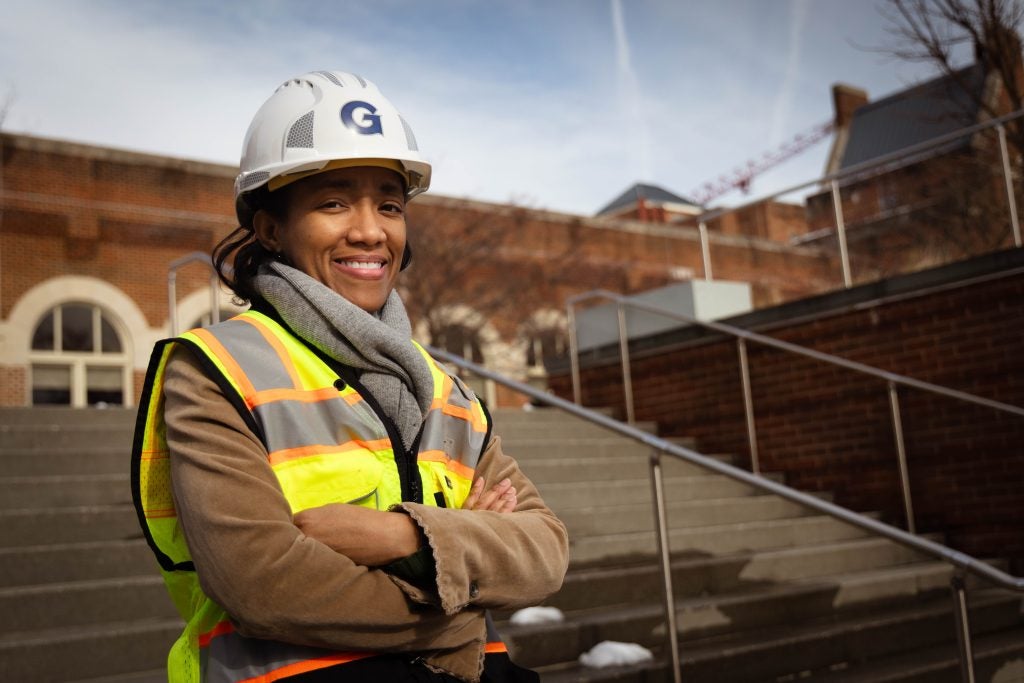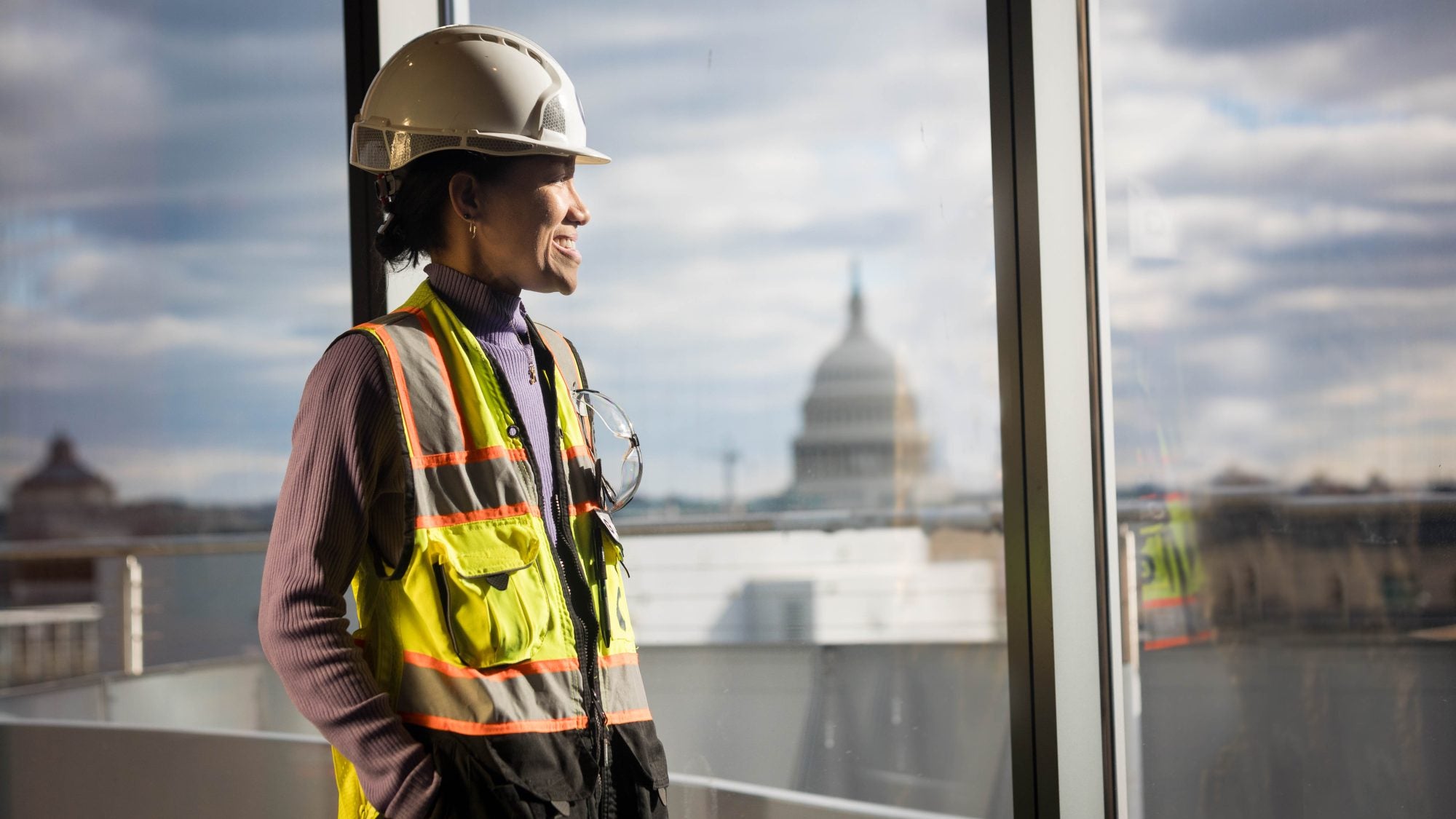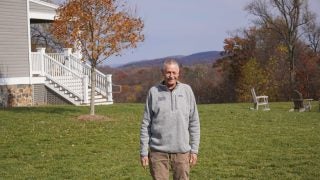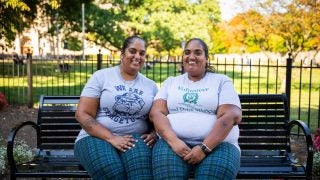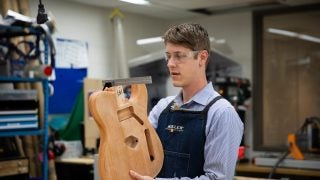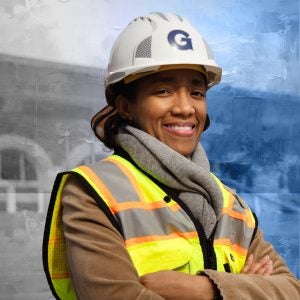
Katherine Williams is the assistant director of Capital Projects at Georgetown. She’s helped renovate historic spaces, design sacred spaces, and build out laboratories on campus.
Now, she leads a team of four project managers who oversee design projects in downtown Washington, DC, and on the Hilltop.
Williams likens her work on a campus to working in a small city. She and her team juggle a variety of projects that make Georgetown run, from overhauling HVAC equipment to tuning up Gaston Hall’s balcony. The reward, she said, is not just the end reveal, but the process of constructing too.
“Because we have everybody doing all types of things, you can learn about different types of projects,” Williams said. “It’s cool to see the behind-the-scenes, behind-the-wall stuff that most people don’t get to see.”
Williams got hooked on architecture at an early age, and went on to earn her bachelor’s in architecture from Howard University and master’s of science in real estate from American University. While studying architecture, Williams saw development ramp up in some areas of DC, while other areas were underdeveloped. She started thinking more about how architecture could impact communities for the better.
She later moved out west, where she developed affordable condo projects, a community garden and other community amenities for a nonprofit in San Francisco. Williams found herself as an advocate for the people in the neighborhoods she served.
“I could talk architecture-speak, where they could talk about their neighborhoods and what they needed,” she said. “I could start to think about how that translated into architecture or landscape that could help improve the communities.”
Years later, after making her way to Georgetown, Williams still sees advocacy as part of an architect’s role. In her off-hours, she volunteers with the AIA Housing and Community Development Knowledge Community and has participated in the United Nations Human Settlements Programme (UN-Habitat), traveling to Nairobi, Poland and other countries for conferences on equitable development and community building.
She also founded the Black Women in Architecture Network, a resource to help increase the number of Black women in architecture. The network provides a scholarship for aspiring architects and hosts events, presentations and a nationwide brunch to connect Black women in the field.
“I don’t want to be the only one in a room every time I go somewhere,” she said. “The more that we can work together or be resources for each other, I think the more that we can help firms and people thrive in their careers as architects.”
Learn more about Williams’ advocacy, her construction projects in downtown DC, and why we need to dispel the “HGTV phenomenon.”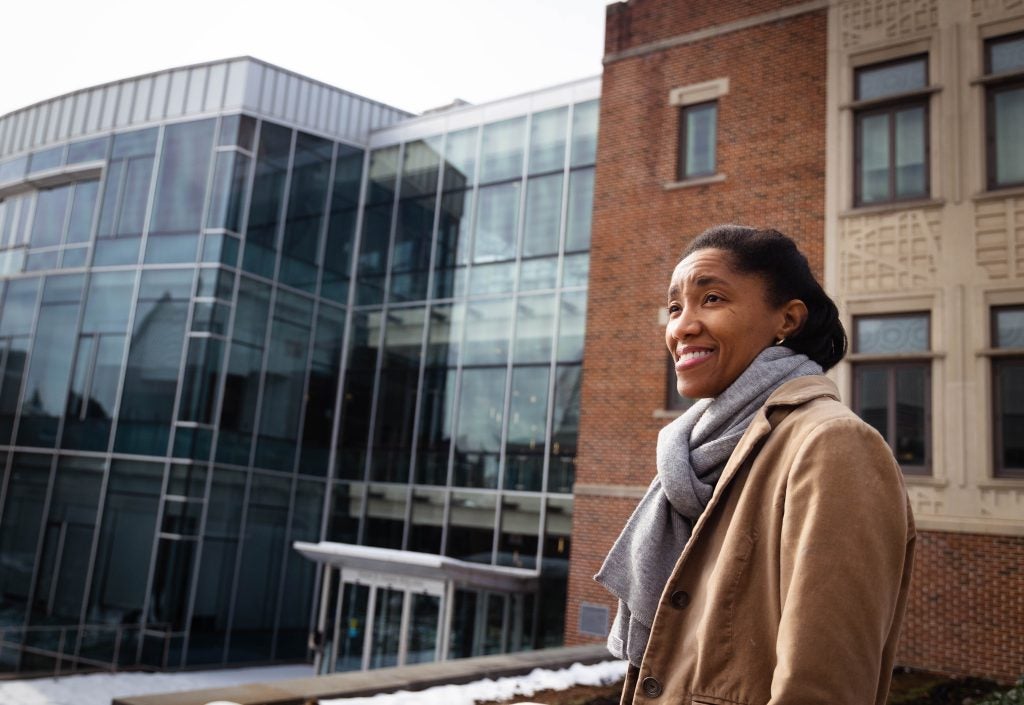
My favorite thing about my job: Getting to see the built space at the end. It’s always fun too, during construction, all the things that you discover, whether you’re doing demo or [seeing] all the ways that different pieces of buildings and spaces come together. It’s cool to see the behind-the-scenes, behind-the-wall stuff that most people don’t get to see.
Sometimes you think [a project] is going to be straightforward, and then you get into a space and problems come up. So figuring those things out and working with the users to give them the space that they have been needing or wanting for a while.
What I’m feeling when I walk into a finished space: It’s very joyful and rewarding. When I go to Gaston for events, one of the things that we did was remove these columns that had been put in temporarily to support the balcony. Now those columns are gone, so you can walk freely around the space and the balcony is much more structurally sound (It’s a 100-year-old structure, so things need to be tuned up every once in a while.) It’s nice to walk in that space and see it being used and know that I had a small part in making it what it is today.
How I got interested in architecture: I went to a job fair through Girl Scouts when I was a kid and met someone who was an architect. I learned about it as a combination of art and science and math, and those were things I was really interested in at school. My mother did a really good job of seeking out opportunities for me to learn more about it. So I did camps and programs from the time I was in elementary school through high school — drafting classes in high school, an away summer program [at] a college campus. So that was a spark and then I continued just building on that as I grew up.
Why architects can be advocates: I got involved in AIA HCD KC [AIA Housing and Community Development Knowledge Community] because I was doing community development work. That’s really tapping into how can we work with underserved communities as architects and think about whether it’s policy or whether it’s the architecture itself, how that can help communities. …
[As architects] We have to do the work that we do naturally, but I think we also have to be in advocacy roles as well when we see issues, because a lot of it is policy. So I think being involved in both levels is important — on the ground as well as knowing which policies are affecting what gets built and designed as well.
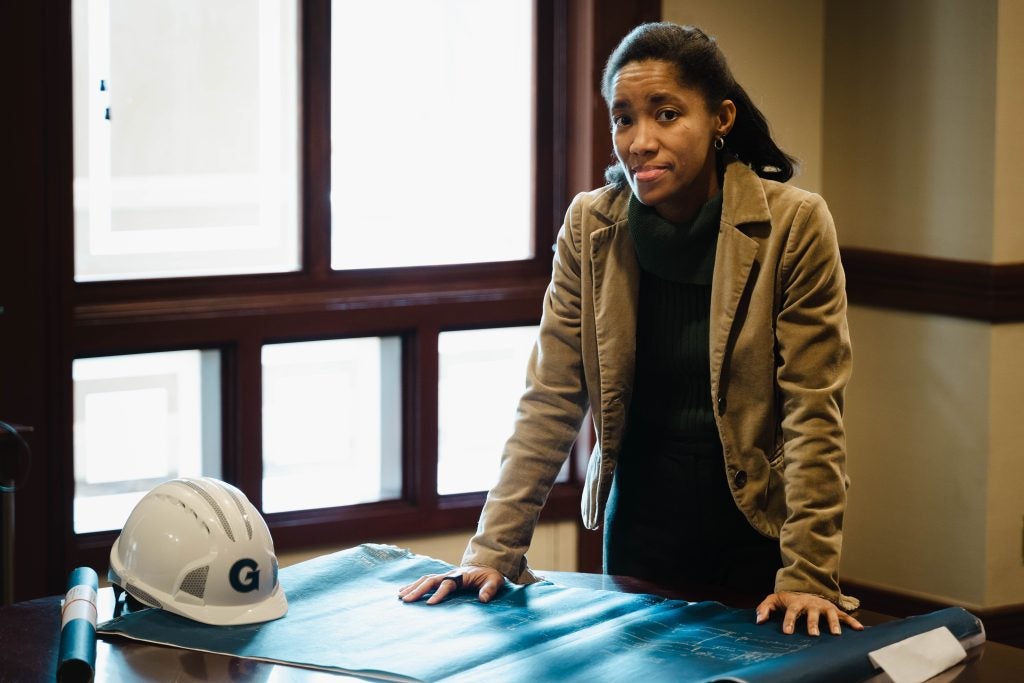
I started the Black Women in Architecture Network because: I had all these activities I was involved in under the umbrella of increasing diversity in the ranks of the architecture profession. There are very few Black women architects when you look at the numbers compared to the number of people in the profession, and particularly licensed architects. I was working on a scholarship, and I was working with another group where we do a series of … panel presentations to highlight Black women in architecture. Then I started a brunch event that’s been happening since 2015. I was doing all these things, and [the network] became a way to organize everything and connect them all and highlight the work that we’re doing and be a resource for Black women as they are coming through the profession and to connect them with others. … We make sure that we know each other and can be resources for each other.
What motivates me to support Black women in architecture: To increase our numbers. I don’t want to be the only one in a room every time I go somewhere. And I know for me, paying for the [licensure] exam was something that was a difficulty. So trying to help other people in similar situations. I think we should be fostering building up our careers and our firms and our businesses and those kinds of things. And the more that we can work together or be resources for each other, I think the more that we can help firms and people thrive in their careers as architects.
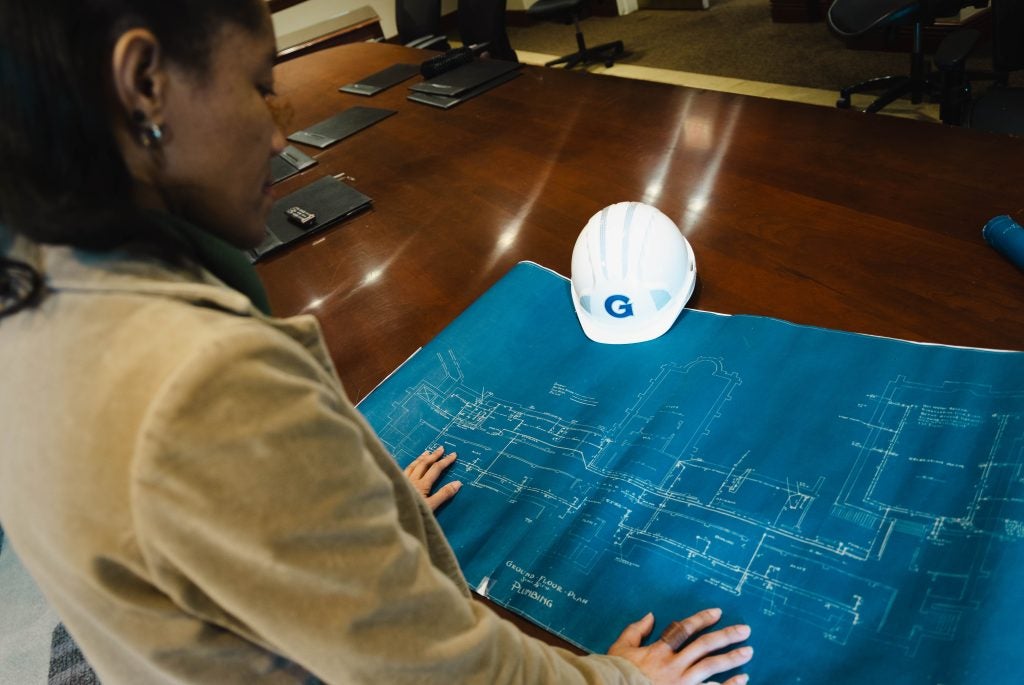
What I wish everyone knew about my job: That design and construction always take longer than you think it’s going to. We’re not magicians. A lot of people think, oh, you can just draw that and you’ll be done. It’s like, no, we have to actually go and investigate and see what’s behind the wall, where’s the electricity coming from, where’s the water coming from, is the structure going to work? That’s the biggest misconception. We talk in the office sometimes about the HGTV phenomenon. People are like, ‘Oh, you could just get a hammer and some nails and we’re done.’ It’s like, no, that’s not how it works [laughs].
My favorite building at Georgetown: I think the stuff that’s coming on the downtown campus will be really interesting. [In one location] We’re trying to take an existing building and make it something new. And then 125 E is a totally new building. There’s going to be some cool interior stuff in there. I think there’s a flavor for everybody. So if you don’t like one thing, just go to another building and you’ll probably find something that you like. … It’s exciting.
